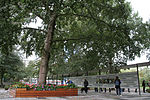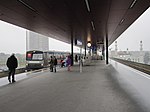El Al Flight 1862

On 4 October 1992, El Al Flight 1862, a Boeing 747 cargo aircraft of the then state-owned Israeli airline El Al, crashed into the Groeneveen and Klein-Kruitberg flats in the Bijlmermeer (colloquially "Bijlmer") neighbourhood (part of Amsterdam-Zuidoost) of Amsterdam, the Netherlands. The crash is known in Dutch as the Bijlmerramp (Bijlmer disaster). In all, 43 people were officially reported as killed, including all of the four people on board and 39 on the ground.: 9 In addition to these fatalities, 11 people were seriously injured and 15 people received minor injuries. The exact number of people killed on the ground is disputed, as the building housed many undocumented immigrants. The crash is the deadliest aviation disaster to occur in the Netherlands.
Excerpt from the Wikipedia article El Al Flight 1862 (License: CC BY-SA 3.0, Authors, Images).El Al Flight 1862
Pa Sembrug, Amsterdam Zuidoost
Geographical coordinates (GPS) Address Nearby Places Show on map
Geographical coordinates (GPS)
| Latitude | Longitude |
|---|---|
| N 52.318888888889 ° | E 4.975 ° |
Address
Pa Sem
Pa Sembrug
1103 EZ Amsterdam, Zuidoost
North Holland, Netherlands
Open on Google Maps









